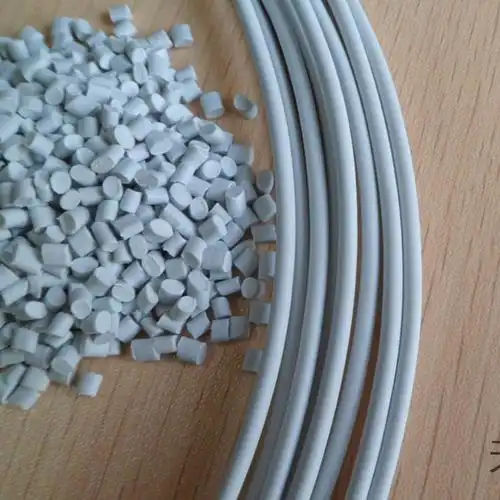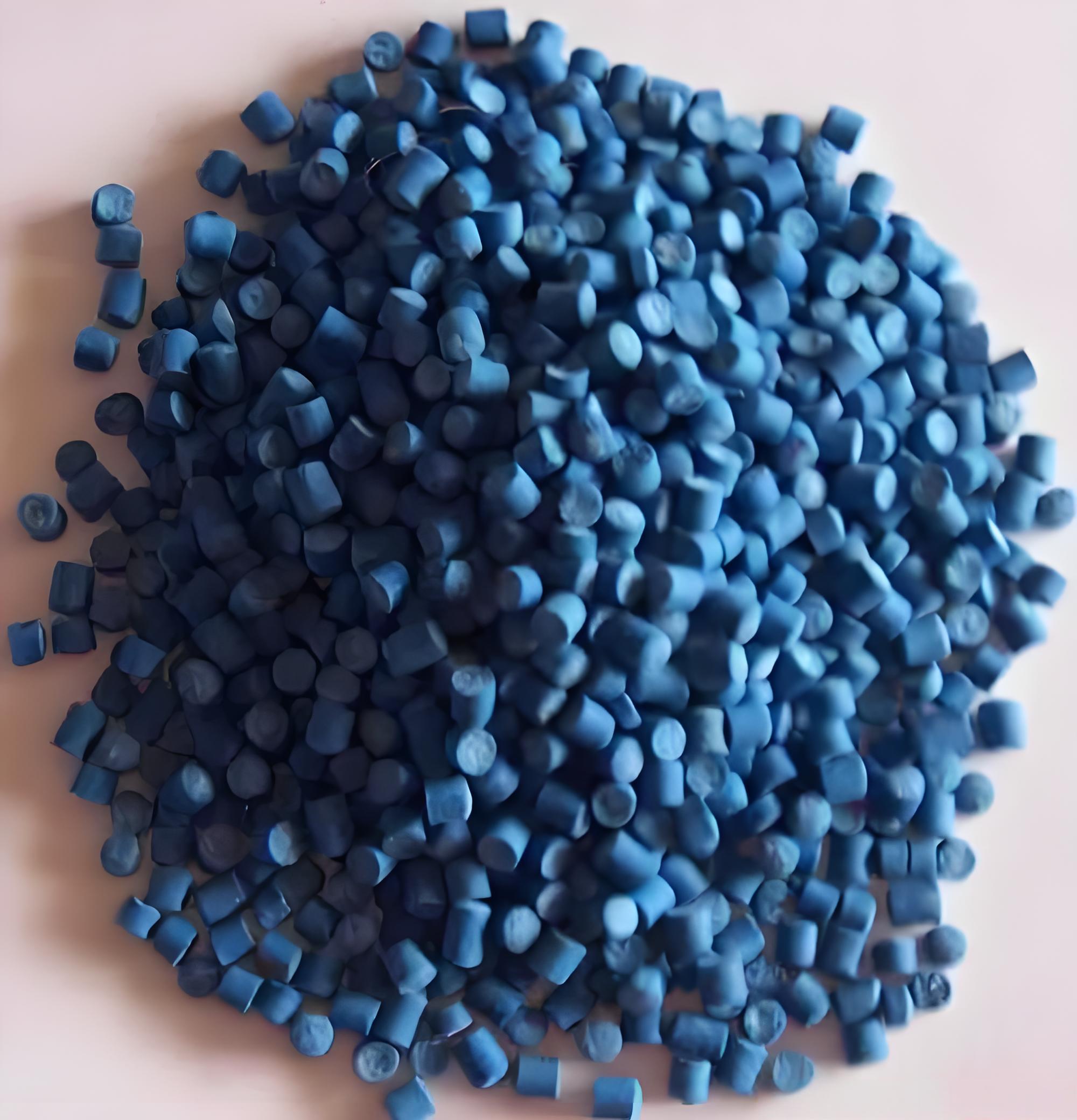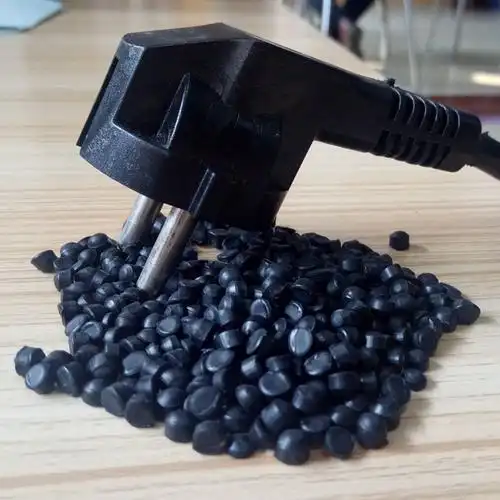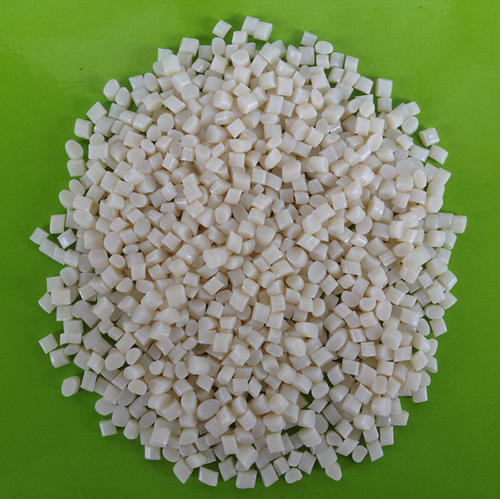In the world of materials and manufacturing, the question of whether two different materials can be bonded together is a common and crucial one. Today, I’ll delve into the topic of whether POM (Polyoxymethylene) and TPE (Thermoplastic Elastomer) materials can be effectively bonded. As someone who has been in this industry for many years, I’ve encountered numerous scenarios where the compatibility of materials for bonding is a make – or – break factor in product design and production.
Understanding POM and TPE Materials
POM: The Engineering Plastic
POM, also known as acetal, is a high – performance engineering plastic. It is renowned for its excellent mechanical properties, such as high stiffness, strength, and fatigue resistance. POM has a low coefficient of friction, making it ideal for applications where smooth movement and wear resistance are essential. It is commonly used in the production of gears, bearings, fasteners, and various precision parts.
One of the key characteristics of POM is its chemical resistance. It can withstand exposure to a wide range of chemicals, including many solvents, oils, and fuels. However, it is susceptible to attack by strong acids and bases. From a surface energy perspective, POM has a relatively low surface energy, which can make it challenging to bond with other materials.

TPE: The Versatile Elastomer
TPE is a class of copolymers or a physical mix of polymers (usually a plastic and a rubber) that have both thermoplastic and elastomeric properties. It offers a good balance of flexibility, toughness, and processability. TPE materials can be easily molded and extruded, and they can be recycled, which is a significant advantage in today’s environmentally conscious world.
TPE is widely used in various industries, including automotive, consumer goods, medical, and footwear. It is commonly found in products such as grips, seals, hoses, and soft – touch components. TPE has a relatively high surface energy compared to POM, which generally makes it more receptive to bonding.
Factors Affecting the Bonding of POM and TPE
Surface Energy
Surface energy plays a vital role in the bonding process. When two materials are to be bonded, the adhesive needs to wet the surfaces of both materials effectively. A material with a high surface energy will allow the adhesive to spread more easily, creating a stronger bond. As mentioned earlier, POM has a low surface energy, while TPE has a higher one. This difference in surface energy can make it difficult for an adhesive to form a strong bond between the two materials.

Chemical Compatibility
The chemical compatibility between the adhesive, POM, and TPE is another critical factor. The adhesive must be able to interact with both materials at a molecular level to create a durable bond. If the adhesive reacts adversely with either POM or TPE, it can lead to bond failure, degradation of the materials, or other undesirable effects. For example, some adhesives may cause stress cracking in POM or soften the TPE, compromising the overall integrity of the bonded assembly.
Environmental Conditions
The operating environment of the bonded assembly also needs to be considered. Factors such as temperature, humidity, and exposure to chemicals can all affect the long – term performance of the bond. POM and TPE have different thermal expansion coefficients, which means they will expand and contract at different rates when exposed to temperature changes. This can put stress on the bond, potentially causing it to fail over time. Additionally, if the bonded part will be exposed to moisture or chemicals, the adhesive must be able to withstand these conditions without losing its bonding strength.
Methods for Bonding POM and TPE
Surface Treatment
Since POM has a low surface energy, surface treatment is often necessary to improve its bondability. There are several surface treatment methods available:
Plasma Treatment: Plasma treatment involves exposing the surface of the POM to a plasma, which is a highly reactive gas. The plasma can clean the surface, remove contaminants, and increase the surface energy by introducing polar functional groups. This makes the POM surface more receptive to the adhesive. Plasma treatment is a relatively fast and effective method, but it requires specialized equipment.
Corona Treatment: Corona treatment uses a high – voltage electrical discharge to modify the surface of the POM. Similar to plasma treatment, it increases the surface energy and improves the wettability of the surface. Corona treatment is a cost – effective option and is commonly used in the printing and packaging industries, but it may not be as effective as plasma treatment for some applications.
Chemical Etching: Chemical etching involves using a chemical solution to roughen the surface of the POM and increase its surface area. This can improve the mechanical interlocking between the adhesive and the POM. However, chemical etching can be a hazardous process, and it requires careful handling of the chemicals to avoid environmental and safety issues.

Selection of Adhesives
Choosing the right adhesive is crucial for successful bonding of POM and TPE. Here are some types of adhesives that can be considered:
Cyanoacrylate Adhesives: Cyanoacrylate adhesives, also known as super glues, are fast – curing adhesives that can form strong bonds with a variety of materials. They can work well for bonding POM and TPE, especially when the surface area of the bond is relatively small. However, they may not be suitable for applications where the bonded part will be exposed to high temperatures or moisture, as they can degrade under these conditions.
Epoxy Adhesives: Epoxy adhesives are known for their high strength and durability. They can provide excellent bonding between POM and TPE, especially when a high – load – bearing bond is required. Epoxy adhesives come in two – part formulations that need to be mixed before use. They have good chemical resistance and can withstand a wide range of temperatures, but they may have a longer curing time compared to cyanoacrylate adhesives.
Polyurethane Adhesives: Polyurethane adhesives offer a good balance of flexibility and strength. They can bond well with both POM and TPE and can accommodate the different thermal expansion coefficients of the two materials. Polyurethane adhesives are also resistant to moisture and chemicals, making them suitable for a variety of applications. However, they may require a specific curing environment, such as a certain temperature and humidity level, to achieve optimal performance.
Mechanical Fastening in Combination with Bonding
In some cases, a combination of mechanical fastening and bonding can be used to improve the reliability of the joint between POM and TPE. Mechanical fasteners such as screws, rivets, or clips can provide additional strength and prevent the bond from failing under high loads. The adhesive can then be used to seal the joint, prevent the ingress of moisture and contaminants, and improve the overall appearance of the assembly.
Testing and Validation
Once the bonding method has been selected, it is essential to test and validate the bonded assembly to ensure that it meets the required performance standards. Here are some common tests that can be performed:
Tensile Strength Test: This test measures the force required to pull the bonded assembly apart. It provides an indication of the strength of the bond and can help determine whether the adhesive and bonding method are suitable for the application.
Shear Strength Test: The shear strength test measures the force required to slide one part of the bonded assembly relative to the other. It is important for applications where the bond will be subjected to shear forces.
Environmental Testing: Environmental testing involves exposing the bonded assembly to different environmental conditions, such as high and low temperatures, humidity, and chemical exposure. This helps to assess the long – term durability of the bond under real – world conditions.

Case Studies
Case Study 1: Automotive Component
In an automotive application, a POM gear needed to be bonded to a TPE seal. The gear was part of a transmission system, and the seal was required to prevent the leakage of lubricants. The initial attempt to bond the two materials using a standard cyanoacrylate adhesive failed because the POM surface had a low surface energy, and the adhesive could not form a strong bond.
To solve this problem, a plasma treatment was applied to the POM gear to increase its surface energy. After the plasma treatment, an epoxy adhesive was used to bond the POM gear to the TPE seal. The bonded assembly was then subjected to tensile strength and environmental testing. The results showed that the bond had sufficient strength to withstand the loads and environmental conditions in the automotive application.
Case Study 2: Consumer Electronics
In a consumer electronics product, a TPE soft – touch grip needed to be bonded to a POM housing. The product was designed to be handled frequently, and the bond needed to be durable and aesthetically pleasing. A corona treatment was used to improve the bondability of the POM surface, and a polyurethane adhesive was selected for its flexibility and chemical resistance.
The bonded assembly was tested for shear strength and appearance. The polyurethane adhesive provided a strong and flexible bond that could withstand the repeated handling of the product. The corona treatment also helped to improve the adhesion of the adhesive to the POM surface, resulting in a smooth and seamless joint between the TPE grip and the POM housing.
Conclusion
In conclusion, POM and TPE materials can be bonded, but it requires careful consideration of several factors. The difference in surface energy between the two materials poses a challenge, but surface treatment methods such as plasma treatment, corona treatment, and chemical etching can be used to improve the bondability of POM. Selecting the right adhesive is also crucial, and options such as cyanoacrylate, epoxy, and polyurethane adhesives can be considered depending on the specific requirements of the application.
Combining mechanical fastening with bonding can further enhance the reliability of the joint. Finally, thorough testing and validation are necessary to ensure that the bonded assembly meets the performance standards. By following these guidelines, manufacturers can successfully bond POM and TPE materials and create high – quality products for various industries.

Related Questions
1. What is the best surface treatment method for bonding POM and TPE in a high – volume production environment?
In a high – volume production environment, corona treatment is often the best surface treatment method. It is a cost – effective and relatively fast process that can be easily integrated into existing production lines. Plasma treatment, while more effective, requires specialized equipment and may be more suitable for low – volume or high – precision applications. Chemical etching can be hazardous and may not be practical for high – volume production due to safety and environmental concerns.
2. Can I use the same adhesive for bonding POM and TPE in different applications, such as automotive and consumer electronics?
It depends on the specific requirements of each application. While some adhesives may be suitable for both automotive and consumer electronics applications, others may not. For example, an adhesive that can withstand the high temperatures and harsh chemicals in an automotive environment may not be necessary for a consumer electronics product that is exposed to milder conditions. It is important to evaluate the performance requirements of each application and select an adhesive that meets those requirements.

3. How long does the bonding process take when using different adhesives for POM and TPE?
The curing time of the bonding process varies depending on the type of adhesive used. Cyanoacrylate adhesives typically cure within seconds to minutes, making them suitable for applications where a fast bonding time is required. Epoxy adhesives usually have a longer curing time, ranging from a few hours to several days, depending on the formulation and curing conditions. Polyurethane adhesives may also have a relatively long curing time, but they can often be accelerated by adjusting the temperature and humidity levels during the curing process.
4. What are the potential risks of bonding POM and TPE without proper surface treatment?
Bonding POM and TPE without proper surface treatment can lead to a weak bond that is prone to failure. The low surface energy of POM can prevent the adhesive from wetting the surface effectively, resulting in poor adhesion. This can cause the bonded assembly to separate under load or during exposure to environmental conditions, leading to product defects, safety issues, and increased costs due to rework or product recalls.
5. Can I bond POM and TPE that have been previously molded or formed?
Yes, it is possible to bond POM and TPE that have been previously molded or formed. However, the surface condition of the molded parts is crucial. The surfaces should be clean, free of contaminants, and have a good surface finish. If the parts have been stored for a long time or have been exposed to harsh conditions, they may need to be cleaned and re – treated before bonding to ensure optimal adhesion.





